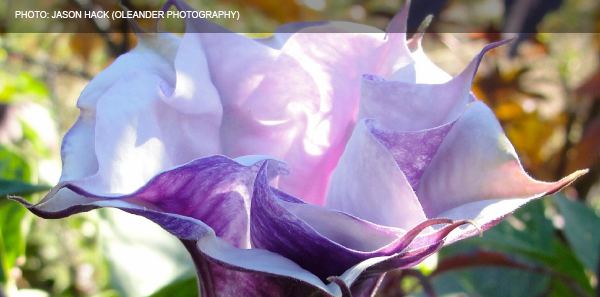
Answer: Anticholinergic toxicity—this brew can be eye-opening.
Toxins
Atropine, hyoscyamine, hyoscine, and scopolamine. All are belladonna alkaloids and possess strong anticholinergic/antimuscarinic properties.
Explore This Issue
ACEP Now: Vol 36 – No 09 – September 2017Mechanism
Toxins block acetylcholine at peripheral and central muscarinic receptors from attaching to their binding site.
Anticholinergic Toxidrome
The mnemonic for anticholinergic symptoms is, “Blind as a bat (big pupils), mad as a hatter (altered mental status, hallucinations, delirium), red as a beet (dry flushed skin), hot as a hare (fever), dry as a bone (dry mouth), full as a flask (full bladder and can’t urinate), silent as a mouse (no bowel movements).”
Death can result from very high fever, dysrhythmias, and seizures.
Facts
They are called anticholinergic because they block the action of acetylcholine, a neurotransmitter substance that controls the contraction of skeletal muscles and also plays an important role in the chemistry of the brain.
For thousands of years, belladonna alkaloids have been used by shamans to induce sensations of leaving their bodies, flying, or changing into an animal.
Jimsonweed is a contraction of “Jamestown weed.” Its effects were first described in 1676 in Jamestown, Virginia. British troops sent to halt Bacon’s Rebellion inadvertently added the locally growing plant to salads. Many became acutely intoxicated and unfit for duty.
Treatments for mild to moderate systemic symptoms of the anticholinergic toxidrome are primarily supportive and include time, benzodiazepines, and an evaluation for alternative causes of altered mental status (eg, glucose, central nervous system infection, etc.).
Severe systemic symptoms may be treated with judicious administration of intravenous physostigmine, an acetylcholinesterase inhibitor.
Belladonnas were named for their use by Italian women to dilate their pupils.
Ocular toxicity has been well-described in gardeners who inadvertently inoculate their eyes after working with Datura plants. This topical administration of alkaloids is absorbed from the lachrymal, inducing parasympathomimetic effects resulting in mydriasis (unilateral or bilateral). Ocular exposures can also result in systemic symptoms. Usual therapy for ocular toxicity is supportive and time.
If the etiology of large pupil is uncertain, pilocarpine instillation will decrease pupil size with central etiology but not with Datura exposure.
 Dr. Hack (Oleander Photography) is an emergency physician and medical toxicologist who enjoys taking photographs of beautiful toxic, medicinal, and benign flowers that he stumbles upon or grows in his garden. Contact him at ToxInRI@gmail.com.
Dr. Hack (Oleander Photography) is an emergency physician and medical toxicologist who enjoys taking photographs of beautiful toxic, medicinal, and benign flowers that he stumbles upon or grows in his garden. Contact him at ToxInRI@gmail.com.





One Response to “Why Herbal Tea Made with Jimsonweed Is Dangerous Brew”
July 3, 2019
Robert AmerineI knew a guy that made some Jimson weed tea, and drank some. I saw him days later, when he got back from the unplanned trip where he awoke to find himself 8 hours north in Grant’s pass, Or. I learned that the tea can lead to up to 8 hours of unintended actions on my part. I don’t need anything to do with that.